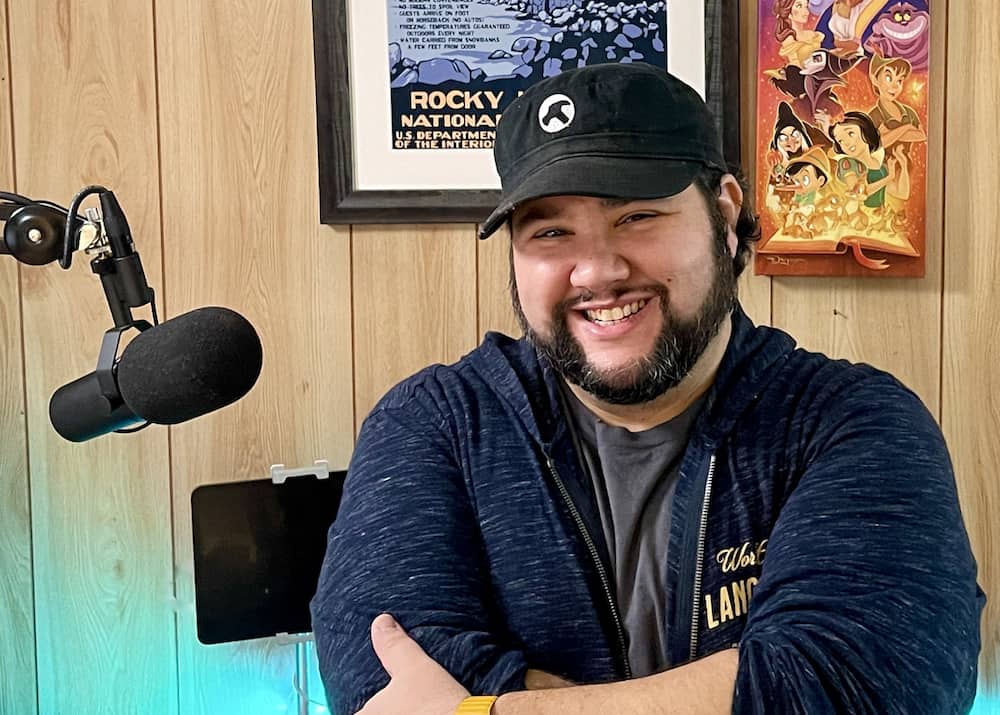One of the best things about podcasting is its flexibility for both the podcaster, and the listener. Podcasting for the podcaster allows experimentation in a way other mediums might not. You can switch up format pretty easily and try different types of content. For the listener, the flexibility comes in when and how they listen.
You can listen to a podcast anywhere you can take your phone, with or without internet (assuming you’ve downloaded some episodes). This makes the content ultraportable – it can go anywhere and it doesn’t kill a listener’s bandwidth or data. Because of that, one was you can extend the reach of your course is by offering it through a private podcast.
Podcasts Don’t Need to be Free
I know what you’re thinking: “aren’t podcasts free?” While it’s true most podcasts are free, a growing number of podcasts are paid or members-only. One example is Dithering, a podcast from Ben Thompson and John Gruber, which is $50/year to listen to. The Athletic has a number of members-only podcasts, as does Relay.fm. In fact, Castos launched private podcast feeds for all of their customers towards the end of last year.
The basic way paid podcasts work is the listener pays to get access to a private feed. One quick and dirty way to do that is the “security by obscurity” approach – basically tell the listeners not to share an open feed so that only they know about it. Naturally, you also wouldn’t submit this feed to Apple Podcasts or the other directories.
But this won’t work because it’s still technically public, even if no one knows about it. So if someone shares it, the cat’s out of the bag.
A More Elegant Solution
A more elegant solution would be to use a service like Castos, which can generate a user-specific podcast feed for them to use. When they sign up, they get their own unique URL that you can revoke access to at any time – whether it’s because they’ve stopped paying, or because they’ve decided what’s theirs is the world’s 🙂
The beauty of a solution like this is you can still include free episodes in that feed if you’d like. But you can keep some private as well.
So how does this relate to your course?
Creating a Private Podcast Feed for Your Course
I’ll freely admit at this point that there are some courses (including some of my own) this approach wouldn’t work for. If you have a lot of screen recordings, having a student listen to your narration navigating a screen isn’t super helpful.
But if you have a mostly informational course where you’re primarily talking and only occasionally supplement with visuals, this could be a perfect approach for you.
Basically, when a student enrolls in your course, on top of giving them access to the course videos / files, you can also give them access to a private podcast feed (this will likely be done through Zapier). The feed can either be pre-populated with all of the course material, or if you only do time-specific launches, it can be dripped out at whatever interval you’d like.
Preparing Your Content for Audio-only
You could, in most cases, just rip the audio out of your videos and be good. But if you’re in the planning process for your next course, it might be worth planning ahead a bit to make the audio-only stuff less reliant on visuals.
If you’re mostly making talking head videos with slides, great! You’re all set. In that case, you can just add a line to the beginning of the recording telling students where they can download the slides (which would be helpful in the videos too).
If you do reference a lot of visuals, you might have a little more work. In that case, you could make sure you write your scripts in such a way that you could easily cut out parts, or reference the material in multiple ways where at least one makes sense for audio.
You could also record shorter, audio-only episodes going over the bigger points of those videos, and encourage students to watch those specific videos when they have a chance. That way, the student can continue with the course without being lost.
Other Benefits of a Podcast-based Course
Aside from portability and freeing up your students from the shackles of the computer to consume your course, there are other benefits as well.
Add Course Material More Regularly
Adding material can be a lot faster. Instead of having to script, shoot, and edit a video, you can use your podcast to create audio-only updates that all students have access to. Adding lessons in the right order could be as simple as back-dating the publish date so it lands in the right spot, or numbering your episodes.
But you could also add bonus content at the end of the course. This could relate to updated information without re-recording full lessons, course-related current events, or just new modules you want to cover.
Engage with Students
Having live office hours to answer student questions could be great…but it could also be terrible. Take it from me – depending on how many students you have and your availability, live office hours might just be you sitting and waiting on a live stream or Zoom call.
Instead if setting a specific time and hoping people show up, you could encourage students to submit questions via email or audio, that you could answer in student-feedback episodes. This allows you to directly engage with those students while also providing good content for all of your students.
You Could Have an Easier Time Monetizing Your Podcast This Way

In my Podcast Liftoff course, I go through several ways students can make money podcasting, including premium content. So far this article has assumed you have a pre-existing course you’re supplementing with a private podcast. But what if the podcast is the course?
There’s a lot of overhead when building a video course. You need to create scripts or outlines, prepare for recording and either do screen capture or create a small in-office set for talking head videos, edit those videos, upload them to a video host, add it all to your LMS, and then launch the course.
The production quality is quite high here if all you want to do is teach what you know. Instead, you might have a free podcast around the topic of your expertise, and a private podcast with paid access that serves as the course. You can still supplement with video, and course materials, but if you’re testing a concept or have course material that may not be greatly helped by video, a podcast-based course can serve as a fantastic, fast way to get your course out there and start generating income.
Add More Value with a Private Podcast for Your Course
Creating an audio-only version of your course can be a low-effort, high-reward move for you.
It will offer more, flexible options for your students, give you an avenue to add more value without much overhead, and could even create another stream of income for you.
About The Author
Joe started his career almost 20 years ago as a freelance web developer before realizing his true passion, which is sharing his years of knowledge about website development, podcasting and course creation with other business owners, freelancers and entrepreneurs in need. His career trajectory includes 20+ years experience building websites, 16+ years using WordPress, 11+ years teaching at the college level, 8+ years podcasting.
You can find him at https://casabona.org/



